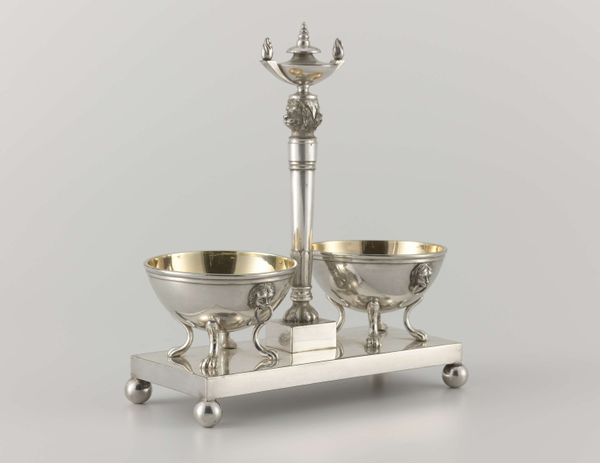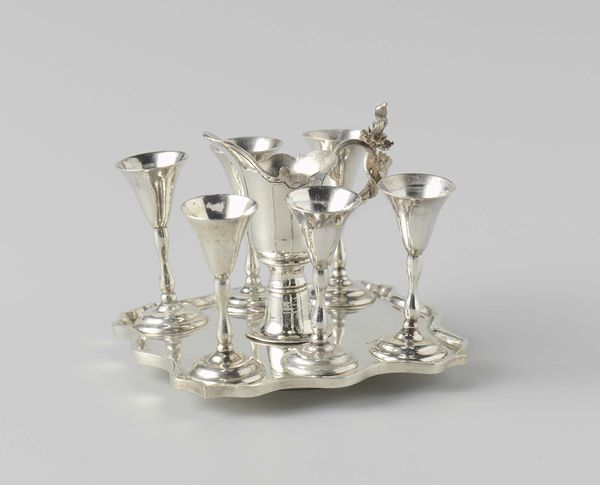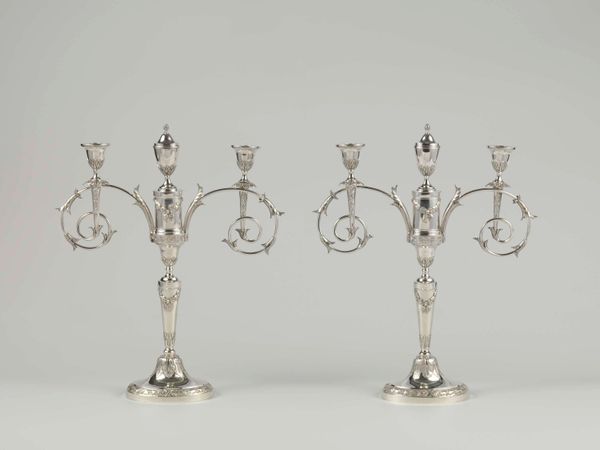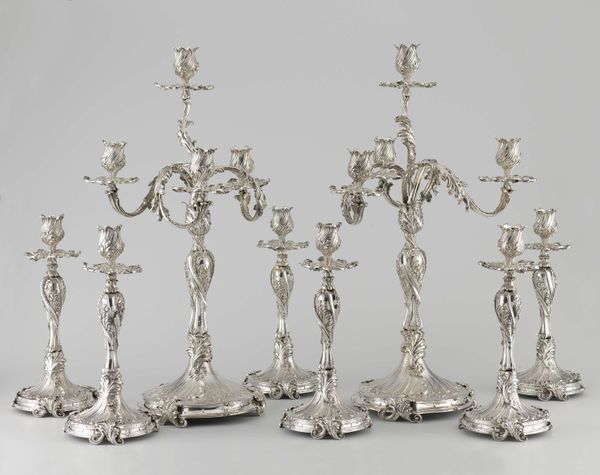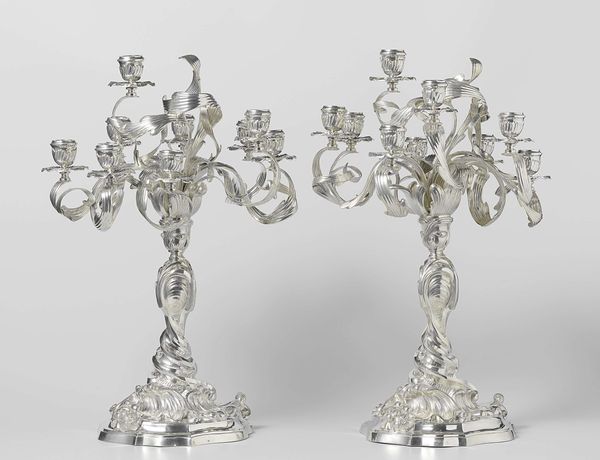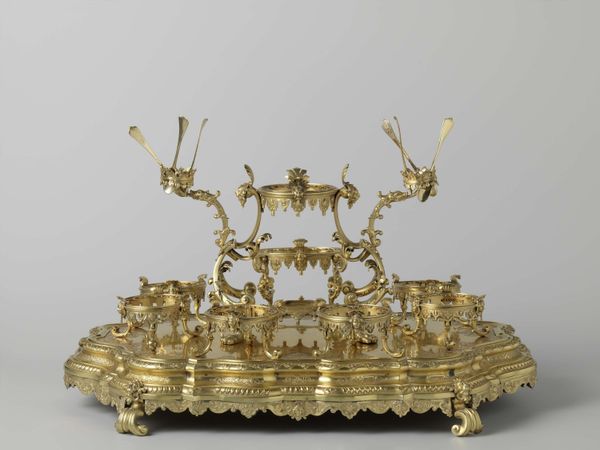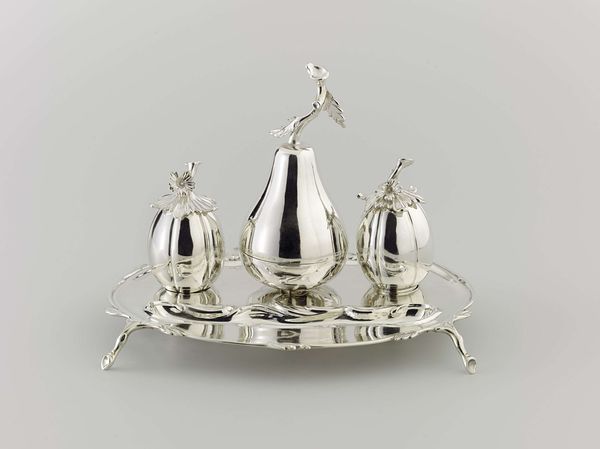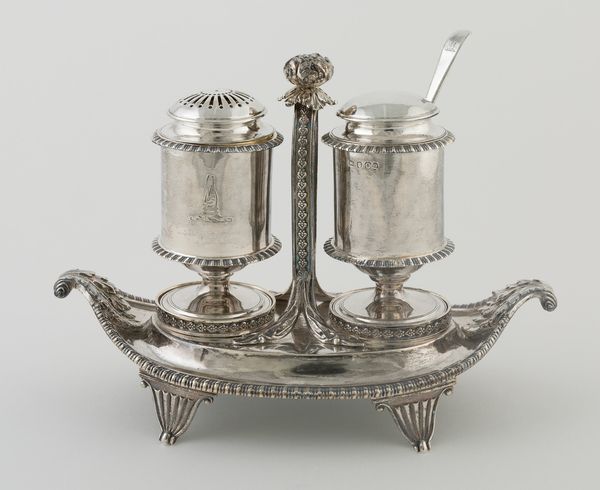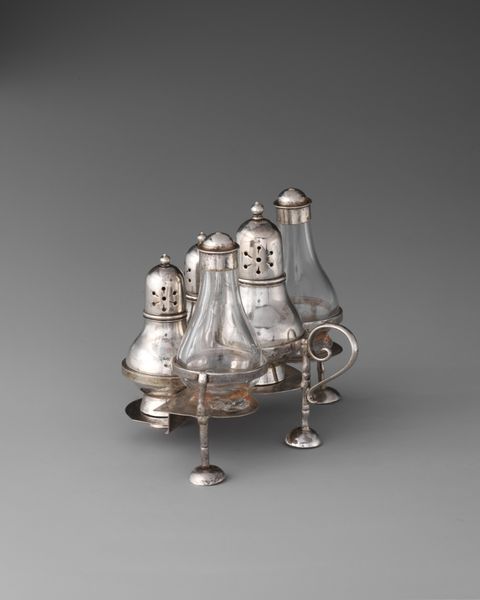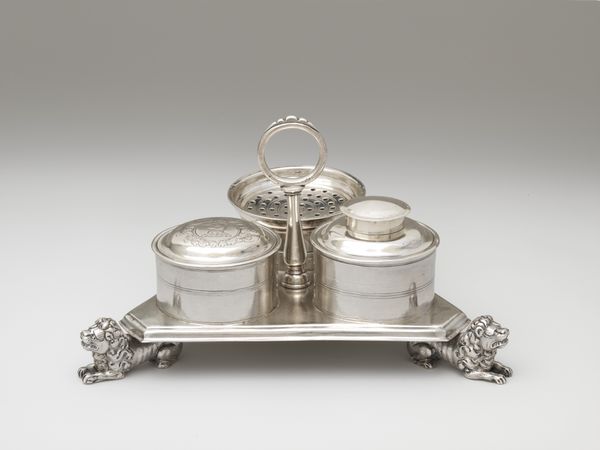
#
3d sculpting
#
3d model
#
3d printed part
#
virtual 3d design
#
product showcase
#
showcase of material used
#
3d shape
#
stoneware
#
metallic object render
#
3d modeling
Dimensions: diameter 2.8 cm, height 2 cm, diameter 3.4 cm
Copyright: Rijks Museum: Open Domain
This silver terrine was crafted by Arnoldus van Geffen, an Amsterdam silversmith, sometime between 1700 and 1769. The opulence of the piece gives us insight into the world of the Dutch elite in the 18th century. During this era, the Netherlands was a major economic power, fuelled by international trade and colonialism. Objects like this terrine were potent symbols of wealth and status, reflecting the owner's place in a highly stratified society. The terrine speaks volumes about the relationship between art, power, and social display. By studying probate inventories, and other historical documents, we can learn more about who owned these objects, how they were used, and what they meant to the people who commissioned and consumed them. This gives us a clearer understanding of art's public role and the politics of imagery at that time.
Comments
No comments
Be the first to comment and join the conversation on the ultimate creative platform.
